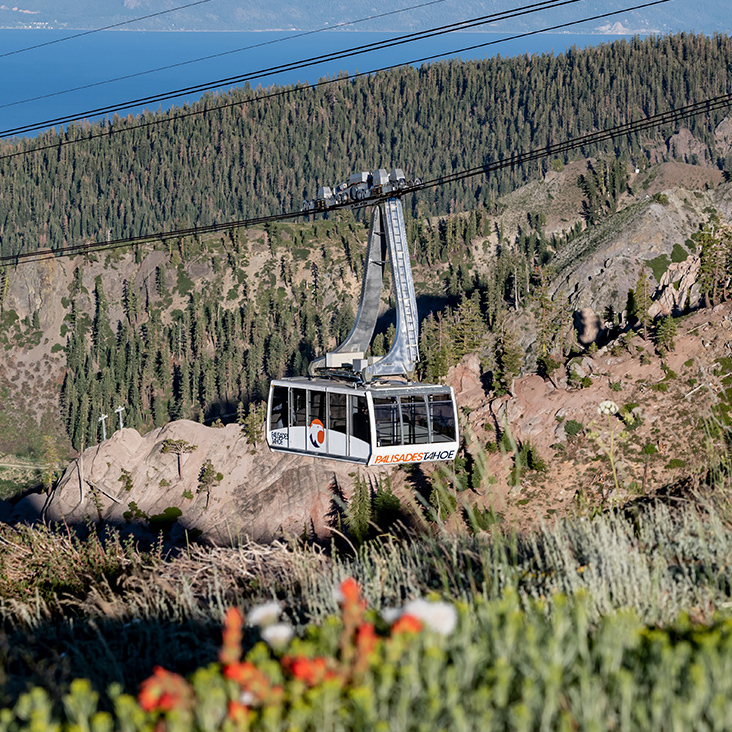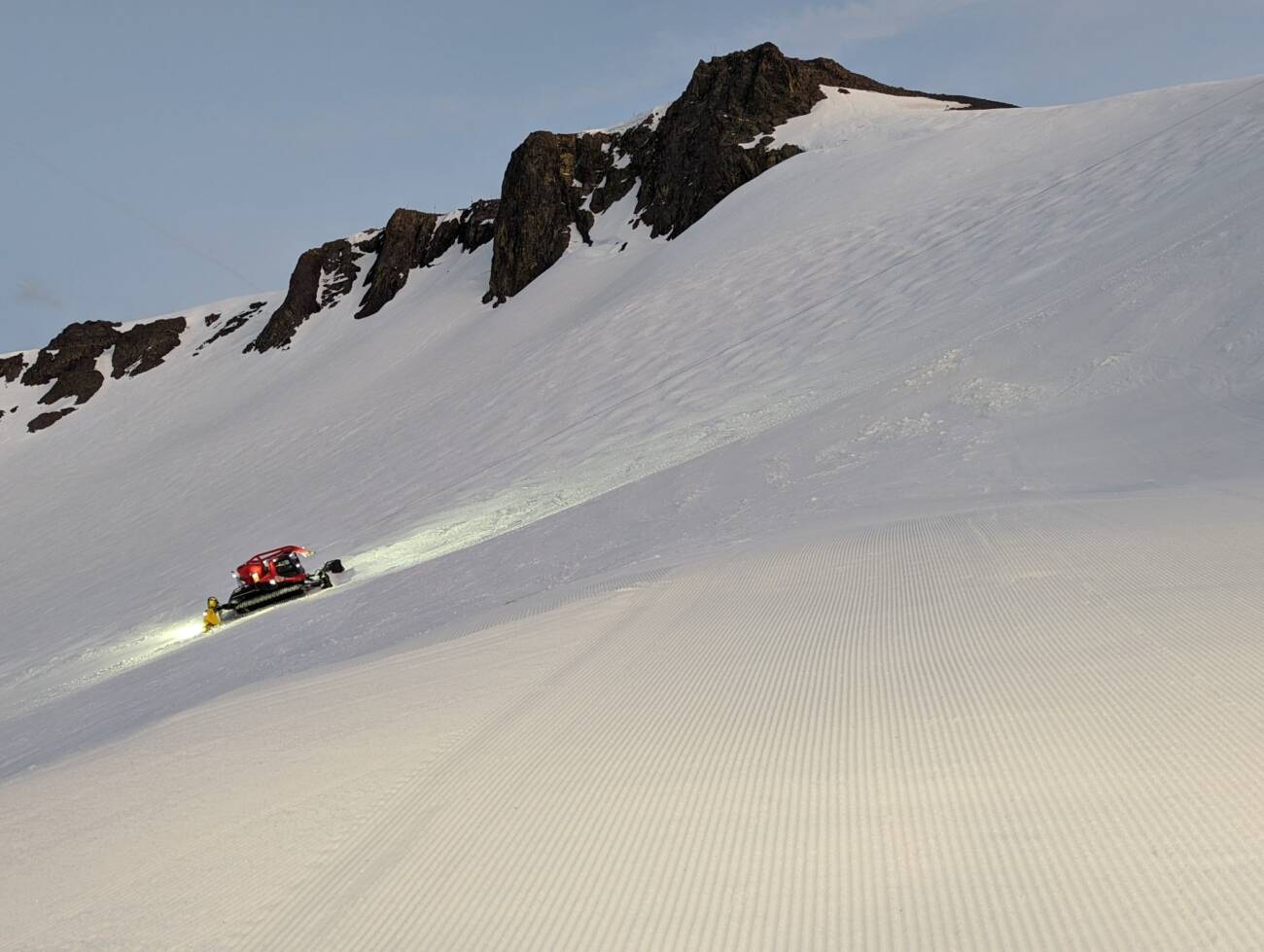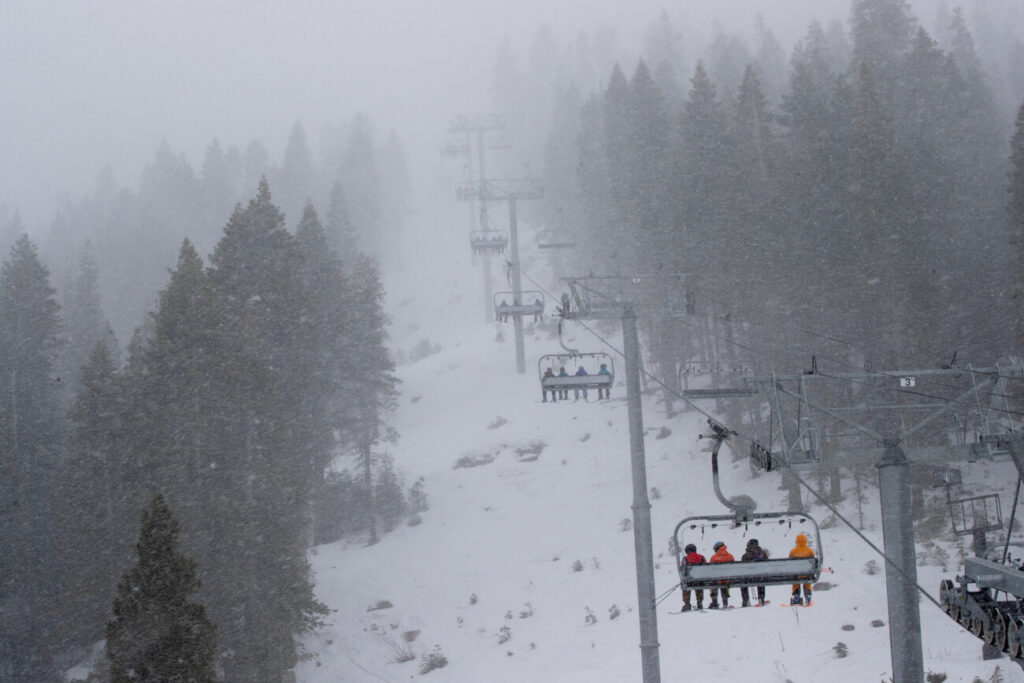Have you ever wondered how we maintain our ski runs as the snow starts to melt? A TON of work goes on behind-the-scenes to move and shape snow into the mountain you see each morning. This is no simple task, and it requires a decent amount of experience and expertise from our seasoned snowcat operators. These days, there are also tools to help make it a bit easier. To give you get a better idea of what springtime grooming is like, we’re going to take a close look at the SNOWsat technology that our PistenBully snowcats come equipped with.
What is SNOWsat?
SNOWsat is a revolutionary technology that uses satellite data and GPS radar to accurately measure snow depth and density. It allows our snowcat fleet to measure snow depth more than 100 feet away from the vehicle. With this information, our Grooming teams can create an even, consistent snow surface, ensuring a smooth and safe skiing experience.
WHAT IT LOOKS LIKE IN A SNOWCAT:

This is the view from the operator’s seat of one of our winch cats (a powerful snowcat that uses a steel cable and a boom). In this photo, you can see that the monitor has a split-screen view.
On the left side of the screen, operators can see snow depth; on the right, operators can view a terrain map. Each view is a useful tool that can be used either separately or simultaneously. The split view is most helpful when you need to see how the snow depth corresponds with the underlying terrain.
During the height of winter, when the snow depth readings are all fairly significant and you can expect most things to be buried, it is more helpful to look at just the terrain view. In the springtime, as things start to melt out, it is helpful to see both or just the snow depth view.
TERRAIN VIEW:

Take a look at this view of the terrain at the top of Siberia ridge:
- The 224″ at the top left of the screen is the snow depth in this spot. Yes, that’s 224 inches!
- The green strip shown here is where the summer road was mapped. It is always helpful to see where the edges of roads are; road maintenance is the most important piece of keeping a ski resort operational.
- This view is NOT showing snow depth, but the terrain. In the tiny square on the top left, THAT view is snow depth.
SNOW DEPTH VIEW

See those bright patches of blue, green, and purple? Those are spots where the snowpack is melted out, and our operators need to repair them.
In the springtime, during an average year (400 inches or so of snowfall), it is normal to see mostly blue coverage on the screen. Our operators would typically be scraping snow from these blue patches and adding it to purple or red patches in the hopes of turning them green. This year, because we received such a significant amount of snowfall (more than 720 inches), you can see that most of this run is dark yellow, which means the snow depth is above 60 inches.
PASS COUNTER

Another neat feature on SNOWsat is something our operators refer to as a “pass counter.” Essentially, it is a function that records travel frequency. It colors where your machine has been and then the colors change if you go over that area again and again. It tracks both efficiency and location.

As you can imagine, these tools are especially useful in whiteout, low-visibility conditions to see if you’re where you’re supposed to be. On days when you can barely see in front of you, SNOWsat is crucial for proper navigation and execution.
REAL-TIME LOCATIONS WITH LTE

With the old system our snowcats used, location data only would sync up with the server every time you drove by an area with WiFi. Now, our snowcats each individually have 4G LTE, so the location data you see on the screen is real-time. Not only can our operators see where the other machines are, but they can also see where winch cat cables are and their current location. The white line across the screen in this photo shows where a winch cable is located.
In Context: Repairing Spring Bowl
To put all this information into context, let’s take a look at a repair project that was done on Spring Bowl on the Palisades side the other night. Here is a “Before” and “After” view of that run. Take note of the following:
- There is much more blue, green, and purple in the “Before” image, pre-repair.
- The snowcat operators will move snow from the dark yellow areas to the patchy, more colorful spots where there is less snow.
- After repair, the snow depth has increased from 26 inches to 65 inches, as shown in the top left corner.
BEFORE

AFTER

To repair this area, the snowcat operator took snow from the Face, as both gravity and skiers have been moving it there all season. The operator then pushed this snow into stacks (large wads of snow) at the top. These stacks then have a road built over them and get blended into the existing snow. SNOWsat technology is crucial in projects like this so that operators know which spots need the most snow.
In Context: Times Square Face
Let’s take a look at Times Square Face, which is part of Mountain Run at Palisades. This is a crucial run to maintain due to the high volume of ski traffic that moves through here. This is also a travel route for machines, meaning we use it to get staff and equipment up the mountain. This activity can expedite the degradation of a run, especially in the springtime.
Sometimes when grooming, snowcat operators are not doing “repair” work, but instead are preparing a run for the future. When we know a large volume of people and/or machines will be moving through an area, we often will add more snow in advance.

Here is a split-screen view of Times Square Face. If you look at the Snow Depth view on the left-hand side, you can see where one of the roads curves through the top of the run. As the snow melts, this road is obstructing the run: See those patches of lighter yellow in the Snow Depth view? These are areas that don’t have quite as much snow on them that are in need of replenishment.

After analyzing the conditions and making a plan for how to fill in the area, the operator begins by adding snow to the area where the underlying road is. Look closely: You will see snow stacked up at the top of the run.

Once the right amount of snow has been moved into that area, a travel route for work is established. This means that the snowcat operator drives the machine over the pile of added snow.

Next, once the snowcat has driven over the new snow, the area is graded out into an even surface and blended into the run.

Finally, the operator will make a series of passes over the run with the machine’s tiller down. The tiller is the attachment on the back of a snowcat that creates that “corduroy” texture you see first thing in the morning.
Once the project is complete, you can see the noticeable difference in the end result on SNOWsat. The light yellow color on the left side of the run is gone and even in the snowcat’s location where the snow is deep, the snow depth has gone from 68 inches to 80 inches after completion of this project. See for yourself:
BEFORE (same photo as above)

AFTER

The Next Big Thing: LiDAR Technology

LiDAR stands for Light Detection and Ranging, and it is a remote sensing method that uses light in the form of a pulsed laser to measure variable distances to the earth. In PistenBully snowcats, LiDAR is used to create a 3D map of the terrain and snow depth. In the summer months at Palisades Tahoe, we have mapped our mountains so that in the wintertime, the LiDAR technology compares that summer map to the existing snowfall on the mountain.
Right now, we only have a few snowcats with the new LiDAR system, but this is a feature that we will continue to invest in as our PistenBully fleet expands. The LiDAR system can take up to 200,000 measurements per second, which provides us with incredibly accurate data on the snow depth, bumps, and other features on our ski runs. Additionally, the LiDAR system in our snowcats is equipped with GPS and other sensors, which allow us to track the location and movements of our snowcats as well.
Methods of Moving Snow
Doze Lanes
One way we move huge amounts of snow around is by using what is known as a doze lane. Operators dig a wide, deep lane and push snow from higher up. The snow slides through the doze lane, sort of like a snowball effect, building as it cascades down the mountain.
This requires some expert maneuvering; it is a bit easier to manage a doze lane when you are in a winch cat, which means the snowcat is hooked up to a tower via cable. If you stop the machine in the wrong spot while working a doze lane, it is very easy to get stuck.
Cross Pushing
Another method of moving snow is what is known as “cross pushing.” It is where snow is moved across an area and then taken somewhere else. This is a more lengthy farming method to harvest deeper pockets of snow or to dig out infrastructure. In this video, you will see one snowcat operator pushing snow across and the other moving it to a different area.
Like these “bonus” Operations Blogs?
Let us know! Send some feedback over to chatter@palisadestahoe.com. We’d love to hear your thoughts, your further questions, or your ideas for what we should write about next.
This post was co-authored by Bandit, Palisades Grooming Supervisor










